Related Research Articles

The Jacquard machine is a device fitted to a loom that simplifies the process of manufacturing textiles with such complex patterns as brocade, damask and matelassé. The resulting ensemble of the loom and Jacquard machine is then called a Jacquard loom. The machine was patented by Joseph Marie Jacquard in 1804, based on earlier inventions by the Frenchmen Basile Bouchon (1725), Jean Baptiste Falcon (1728), and Jacques Vaucanson (1740). The machine was controlled by a "chain of cards"; a number of punched cards laced together into a continuous sequence. Multiple rows of holes were punched on each card, with one complete card corresponding to one row of the design.
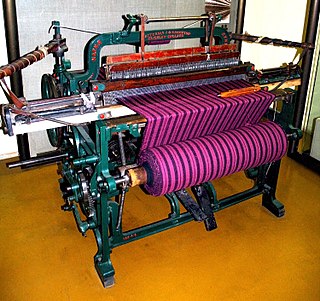
A loom is a device used to weave cloth and tapestry. The basic purpose of any loom is to hold the warp threads under tension to facilitate the interweaving of the weft threads. The precise shape of the loom and its mechanics may vary, but the basic function is the same.

Weaving is a method of textile production in which two distinct sets of yarns or threads are interlaced at right angles to form a fabric or cloth. Other methods are knitting, crocheting, felting, and braiding or plaiting. The longitudinal threads are called the warp and the lateral threads are the weft, woof, or filling. The method in which these threads are interwoven affects the characteristics of the cloth. Cloth is usually woven on a loom, a device that holds the warp threads in place while filling threads are woven through them. A fabric band that meets this definition of cloth can also be made using other methods, including tablet weaving, back strap loom, or other techniques that can be done without looms.
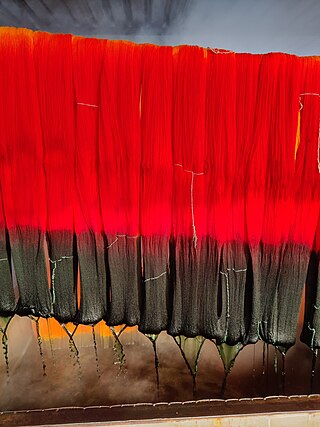
Dyeing is the application of dyes or pigments on textile materials such as fibers, yarns, and fabrics with the goal of achieving color with desired color fastness. Dyeing is normally done in a special solution containing dyes and particular chemical material. Dye molecules are fixed to the fiber by absorption, diffusion, or bonding with temperature and time being key controlling factors. The bond between dye molecule and fiber may be strong or weak, depending on the dye used. Dyeing and printing are different applications; in printing, color is applied to a localized area with desired patterns. In dyeing, it is applied to the entire textile.

Damask is a reversible patterned fabric of silk, wool, linen, cotton, or synthetic fibers, with a pattern formed by weaving. Damasks are woven with one warp yarn and one weft yarn, usually with the pattern in warp-faced satin weave and the ground in weft-faced or sateen weave. Twill damasks include a twill-woven ground or pattern.

Textile manufacturing is a major industry. It is largely based on the conversion of fibre into yarn, then yarn into fabric. These are then dyed or printed, fabricated into cloth which is then converted into useful goods such as clothing, household items, upholstery and various industrial products.

A selvage or selvedge is a "self-finished" edge of a piece of fabric which keeps it from unraveling and fraying. The term "self-finished" means that the edge does not require additional finishing work, such as hem or bias tape, to prevent fraying.
The manufacture of textiles is one of the oldest of human technologies. To make textiles, the first requirement is a source of fiber from which a yarn can be made, primarily by spinning. The yarn is processed by knitting or weaving, which turns yarn into cloth. The machine used for weaving is the loom. For decoration, the process of colouring yarn or the finished material is dyeing. For more information of the various steps, see textile manufacturing.

In textile manufacturing, finishing refers to the processes that convert the woven or knitted cloth into a usable material and more specifically to any process performed after dyeing the yarn or fabric to improve the look, performance, or "hand" (feel) of the finish textile or clothing. The precise meaning depends on context.
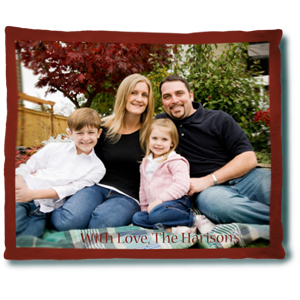
A photo blanket is a large, rectangular piece of fabric displaying images, pictures, or designs, often with bound edges, used as a blanket or decorative object. Historically photo blanket were made of thick cloth depicting people, objects, and symbols intended to tell a story or reveal historical events.

Bradford Industrial Museum, established 1974 in Moorside Mills, Eccleshill, Bradford, United Kingdom, specializes in relics of local industry, especially printing and textile machinery, kept in working condition for regular demonstrations to the public. There is a Horse Emporium in the old canteen block plus a shop in the mill, and entry is free of charge.

Uster Technologies, in its industry often called USTER, is a Swiss manufacturer of analytical instruments and on-line monitoring systems for the textile industry, based in Uster, Switzerland. It emerged as a management buy-out form of the textile division Zellweger Uster of the Zellweger Luwa Group in 2003. From 2007 until 2012 the company was publicly traded and listed on the main segment of SIX Swiss Exchange. Since 2012 Uster Technologies is a subsidiary of Toyota Industries Corporation.
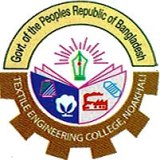
The Textile Engineering College, Noakhali is a textile technology learning institute situated in Noakhali, Bangladesh and is affiliated with Bangladesh University of Textiles (BUTEX). It is one of the seven textile engineering colleges in Bangladesh which are collectively funded and controlled by the Directorate of Textiles, Ministry of Textiles and Jute. Textile Engineering College, Noakhali is an engineering educational institute in Bangladesh offering Graduation in different core of Textile Engineering with affiliation of Bangladesh University of Textiles and govern of Ministry of Textiles & Jute, Bangladesh.
Textile Engineering College, Chittagong is a college in Bangladesh, offering bachelor's degree in textile engineering. It is situated by the side of old Dhaka Trunk road which passes through Zorargonj, Mirsharai, Chittagong. It is one of the seven constituent textile engineering colleges of Bangladesh University of Textiles, which are collectively funded by the Department of Textiles.

The Museum of Textiles and Industry is one of the two museums in Busto Arsizio, Italy, that specialises in spinning and weaving. It was opened in 1997 to house objects, pictures and archive material representing Busto Arsizio's industrial history.

A rapier loom is a shuttleless weaving loom in which the filling yarn is carried through the shed of warp yarns to the other side of the loom by finger-like carriers called rapiers.
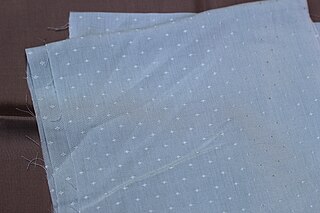
Dobby, or dobbie, is a woven fabric produced on the dobby loom, characterised by small geometric patterns and extra texture in the cloth. The warp and weft threads may be the same colour or different. Satin threads are particularly effective in this kind of weave as their texture will highlight the pattern.
Wet Processing Engineering is one of the major streams in Textile Engineering or Textile manufacturing which refers to the engineering of textile chemical processes and associated applied science. The other three streams in textile engineering are yarn engineering, fabric engineering, and apparel engineering. The processes of this stream are involved or carried out in an aqueous stage. Hence, it is called a wet process which usually covers pre-treatment, dyeing, printing, and finishing.
An air-jet loom is a shuttleless loom that uses a jet of air to propel the weft yarn through the warp shed. It is one of two types of fluid-jet looms, the other being a water-jet loom, which was developed previously. Fluid-jet looms can operate at a faster speed than predecessor looms such as rapier looms, but they are not as common. The machinery used in fluid-jet weaving consists of a main nozzle, auxiliary nozzles or relay nozzles, and a profile reed.

The Game of Thrones Tapestry is a hand-crafted tapestry, woven by hand on a jacquard loom, with additional embroidery. The tapestry tells the entire story of the television show, Game of Thrones. It consists of seven 11-metre-long panels and one 10.5-metre panel. The eight panels depict scenes from each episode and include images of crew at work. The tapestry was commissioned by HBO and Tourism Ireland, the tourism bureau of Northern Ireland where HBO filmed much of the series.
References
- ↑ "Statistics on textile industry in Pakistan - The Express Tribune". The Express Tribune. 18 March 2013. Retrieved 25 October 2016.
- ↑ "Ministry of Textile, Pakistan" . Retrieved 25 October 2016.
- ↑ "INSTITUTE OF HANDLOOM & HOME TEXTILE TECHNOLOGY | Multan | Pakistan | Enic.PK". www.instituteofhandloomhometextiletechn.enic.pk. Retrieved 24 October 2016.
- 1 2 "LAHORE: Institute of Handloom made college". DAWN.COM. 5 May 2004. Retrieved 25 October 2016.
- ↑ "Accredited Engg. Programmes in Pakistan(First Schedule)". www.pec.org.pk. Retrieved 25 October 2016.